Modernism/Cubism
1/31
Earn XP
Description and Tags
AP Art History
Name | Mastery | Learn | Test | Matching | Spaced |
|---|
No study sessions yet.
32 Terms

Goldfish:
D: 1912, P/S: Fauvism, A: Matisse, M/T: Oil on canvas, F: Depicts the serenity of the fish in the water, C: despite his probable skill with oil paints, Matisse chose to paint it in flat, more 2 dimensional way. This was a very telling thing that characterized modernism along with bright colors.
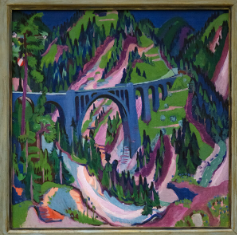
The Bridge:
D: 1900 CE, P/S: German Expressionism, A: Kirchner, M/T: Oil on Canvas, F: artist made this to protest about the industrial revolution. C: Kirchner thought the changing times from the past to the present made the current time a bridge.
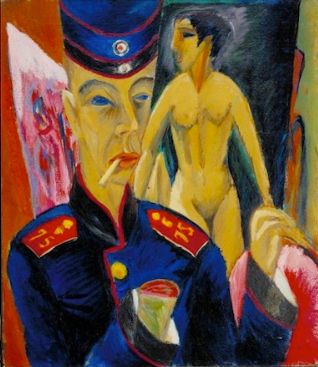
Self Portrait as a Soldier:
D: 1915, P/S: German Expressionism, A: Kirchner, M/T: Oil on Canvas, F: served as a reflection of the artist’s personal war traumas and mental illnesses. C: He wrestles with his homosexuality and mental distress following the war. We see a missing hand in the uniform of his lover. This grappling is shown in the distortion of human figures and overall chaos of the piece. This painting is a part of the larger piece, “The Bridge.”
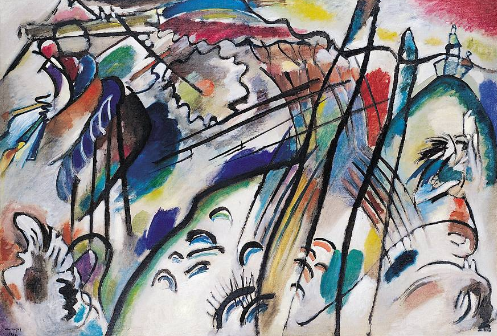
The Blue Rider:
D: 1911, P/S: German Expressionism, A: Kandinsky and Marc, M/T: Oil on canvas, F: the Blue Rider conveys the spirituality of his life. C: The artist had a condition called synithesia which made his sense of hearing and color combine, causing these pieces he created to act as musical compositions for him.

Memorial Sheet:
D: 1920, P/S: Post War Expressionism, A: Kollwitz, M/T: Woodcut with white and black ink, F: Kollwitz was commissioned to create a memorial art piece to commemorate Karl Liebknecht. C: It resembles a scene found in many art piece where people commiserate over the death of Jesus.
Notes:
Degenerate Art: Art that was, according to Hitler, bad. He created a gallery of art that he did not like and wanted to adhere to extremely strict and traditional standards of what art should be.
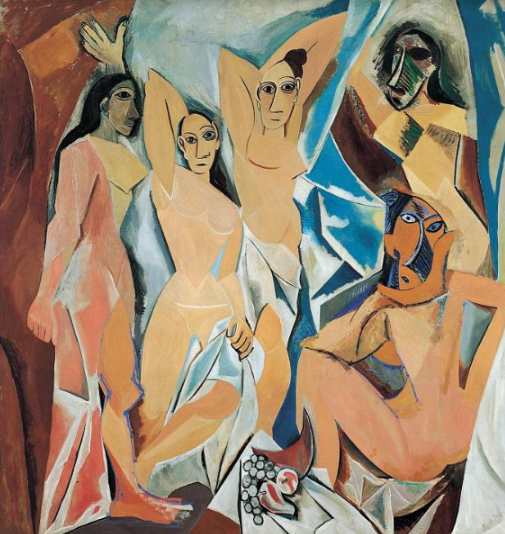
Les Demoiselles d’Avigon:
D: 1907, P/S: Cubism, A: Picasso, M/T: Oil on Canvas, F: Depicts prostitutes from scattered perspectives, C: This piece faced some social scorn at the time of its painting. It was hidden away and kept a secret until much later. This was due to the social stigma around getting with prostitutes.

The Portuguese:
D: 1911, P/S: Cubism, A: Braque, M/T: Oil on Canvas, F: Depicts a Portuguese guitar player. C: The scattered perspectives mark it as a product of the Cubism movement. It’s distorting lenses and muted colors make it one of the most recognizable pieces from this time.
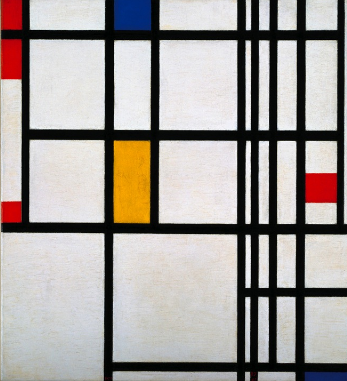
Composition in Red, Blue and Yellow:
D: 1940, P/S: De Stijl, A: Mondrian, M/T: Oil on canvas, F: reflected the artist’s desire to simplify art down to its simplest form. C: This style of art shows the geometry and consideration the De Stijil movement encapsulated. Though it looks almost digital, every line was painted by hand and there was a lot of intention behind this piece.
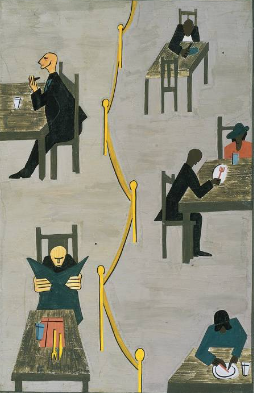
Migration of the Negro:
D: 1940, P/S: Modern Art, A: Lawrence, M/T: Modern Tempera on Masonite, F: Tells the story of the mass exodus of Black families looking for work in the north, C: Cubist, flatness, strong colors and shapes, series consisted of 60 which were worked on simultaneously.
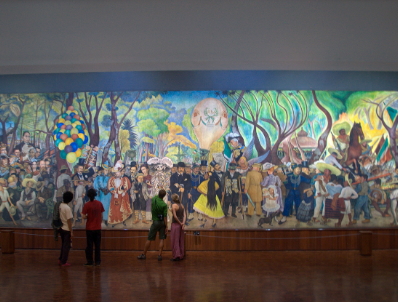
Dream of a Sunday Afternoon in Alameda Park
D: 1947, P/S: Mexican Modernism, A: Diego Rivera, M/T: Fresco, F: Created for a restaurant in Mexico City, C: It was moved into a museum after the place it was stored in was damaged by and earthquake. The focus is on the class system in Mexican culture that was created by Spanish colonization.He was making fun of Mexicans who though they were better than others due to their money or ethnicity.

Fountain (Second Version):
D: 1950, P/S: Dada, A: Duchamp, M/T: Glazed sanitary china, F: made to challenge the standards of art and make people ask questions. C: Was rejected from the gallery it was submitted to. The artist pushed a lot of boundaries with this piece that made it strange for the time. This work and artist opened the door for the pop artists of the 60’s.
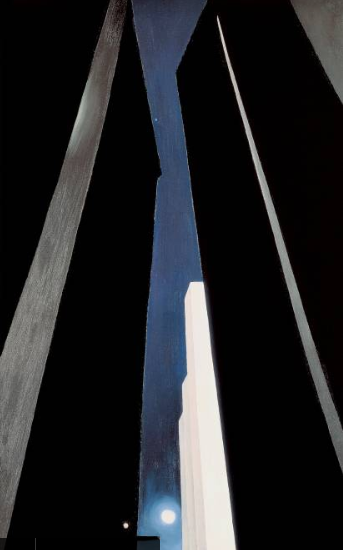
City Night:
D: 1930, P/S: Dada, A: O’keeffe, M/T: Oil on canvas, F: Depicts the view of the night sky blocked by city buildings. C: The concept of skyscrapers in this piece was polarized. Some people saw them as a beacon of the revolution but the artist saw them as claustrophobic and menacing, which is perhaps why she chose such a dark color palate.
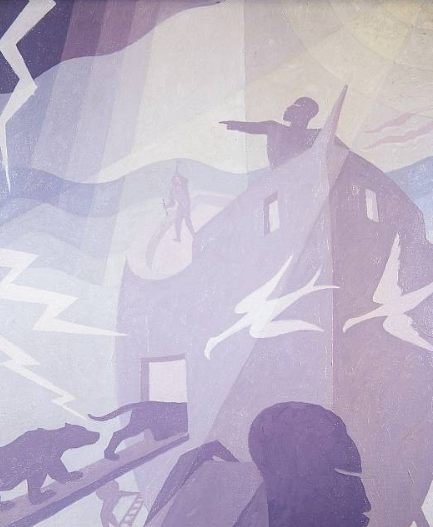
Noah’s Ark:
D: 1927, P/S: Dada, A: Douglas, M/T: Oil on Masonite, F: Depicts the biblical story of Noah’s Ark through Douglas’ lense. C: a lot of inspiration was drawn, by Disney, from the Harlem Renaissance and artists like Douglas.
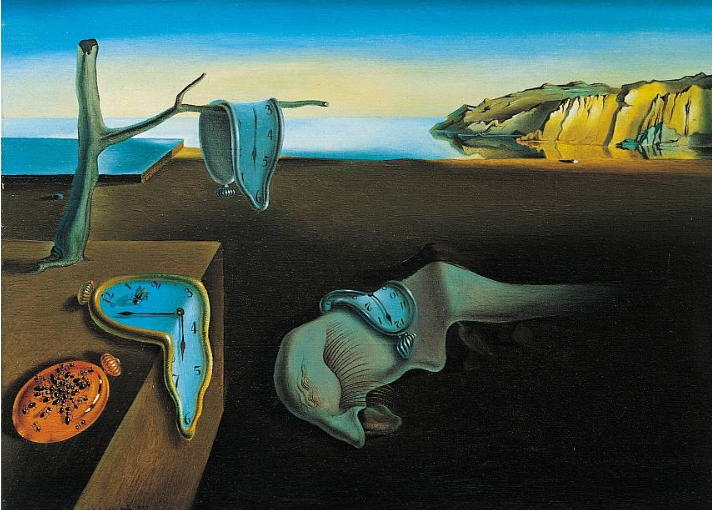
The Persistence of Memory:
D: 1931, P/S: Surrealism, A: Salvador Dali, M/T: Oil on Canvas, F: Dali created this piece as a response to the ever industrializing world, C: the strange figure out he ground has been debated by historians. It could be a face and it could be a multitude of other things. This is an optical illusion. The cliffs in the background may be the ones from his childhood home. The ants seem to swarm among the metal rather than the flesh on the ground.
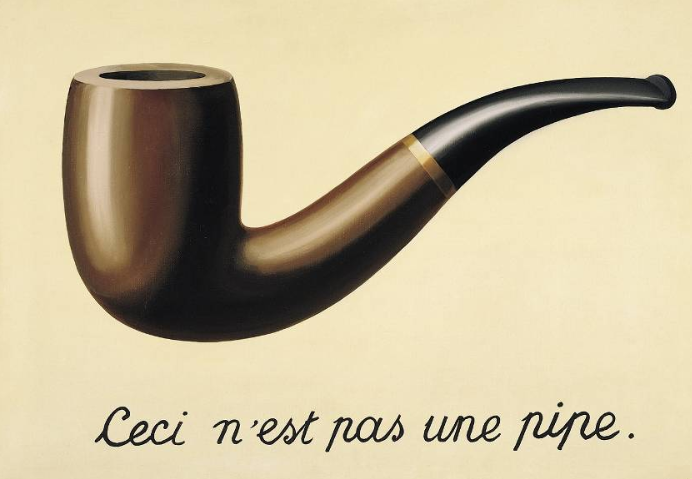
The Treachery of Images:
D: 1930, P/S: Surrealism, A: Magritte, M/T: Oil on Canvas, F: Depicts a pipe. C: This is an ironic painting that shows that artists don’t bring actual objects, they just paint them.

Object:
D: 1936, P/S: Surrealism, A: Oppenheim, M/T: Oil on canvas, F: Depicts objects covered in fur. C: This irony was a pillar of the Surrealist movement. It is ironic and not practical or functional, simply for enjoyment.
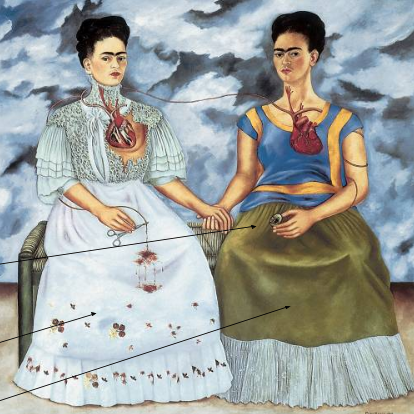
The Two Frida’s:
D: 1939, P/S: Not Surrealist (Mexican Expressionism?), A: Frida Kahlo, M/T: Oil on canvas, F: Depicts two versions of the artists that reflect her personality and duality. C: She is mixed with Mexican and European which influence the piece. Her mixed heritage reflect in the clothing that each culture would wear. Both versions have a heart which are connected by an artery.
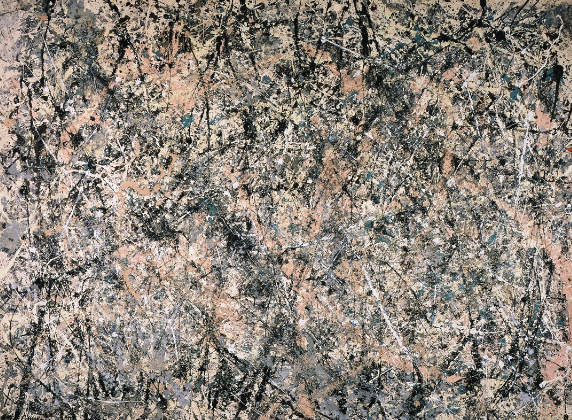
Number 1 (Lavender Mist):
D: 1950, P/S: Action painting, A: Pollock, M/T: Oil,
enamel, and aluminum paint on canvas, F:evoked pure emotion from the viewer. C: Pollock would hap-hazardly spray paint on the canvas and use materials like sticks and other objects to spread it around the canvas.
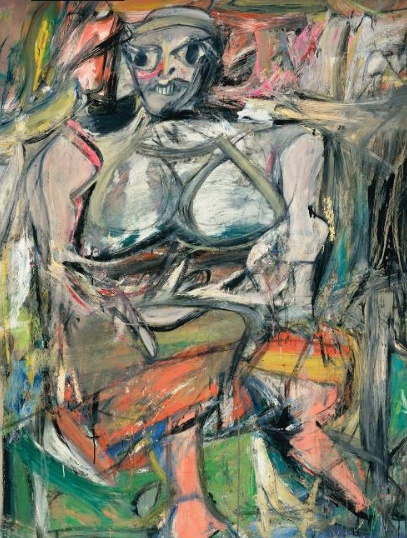
Woman I:
D: 1950, P/S: Action Painting, A: Kooning, M/T: Oil on canvas, F: depicted a young woman, C: He used a painter’s knife instead of a brush and channeled his emotions in his painting resulting in aggressive strokes and more violent depictions. The grin in this painting is the manifestation of the idea of perfection in the media. Reworked many times. His character was questioned in his life due to his many girlfriends and playboy-like behavior.
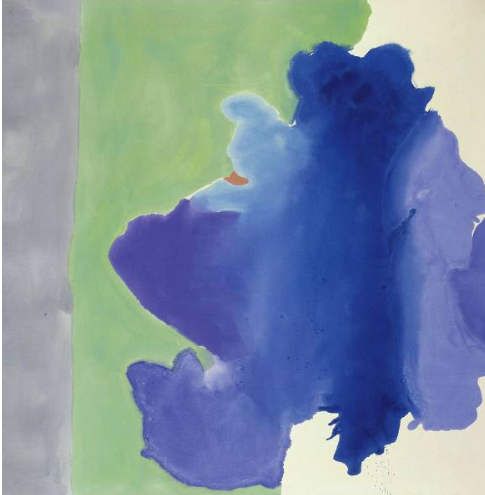
The Bay
D: 1963, P/S: Color field painting, A: Frankenthaler, M/T: Acrylic on canvas, F: depicted a bay, C: used the Pollock method of laying the canvas down onto he group. Diluted oil paints with turpentine or water colors with water until they were thin. These were then poured on raw canvas and let them soak until they stained.

Hopeless:
D: 1963, P/S: Pop art, A: Lichetenstein, M/T: Oil on Canvas, F: Depicts a young woman feeling sad C: Deals with the concept of high brow and low brow art. What could be thrown away vs. what couldn’t.
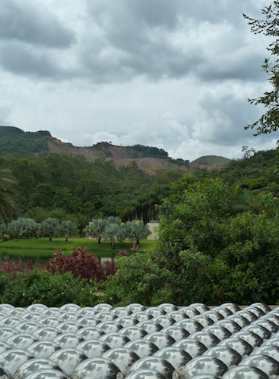
Narcissus Garden:
D: 1962, P/S: Performance art, A: Kusama, M/T: Mirror balls, F: Reflects the viewers in a distorted and wacky way, C: The name of the piece originates from the Greek myth of Narcissus who was obsessed with himself and his reflection. 1500 reflected mirror balls, the piece depends on the viewer’s interaction and how they perceive themselves.

Marilyn Diptych
D: 1962, P/S: Pop-art, A: Andy Warhol, M/T: Oil, acrylic and silk screen enamel on canvas, F: served as a representation of the consumerist culture that America embodied and celebrity culture. C: Marilyn Monroe, who was an extremely revolutionary figure of the 50’s, has her face repeated over and over again. The different values and depths of the shadows in each panel create more a more interesting experience for the viewers.

Lipstick on a Caterpillar:
D: 1970, P/S: Pop art sculpture, A: Oldenburg, M/T: first cheap materials, then metal, F: Depicts the divide between masculine/feminine contemporary sculpture. C: Anti-war around the time of the Vietnam war.

Spiral Jetty:
D: 1970, P/S: Pop art sculpture, A: Smithson, M/T: materials from nature, F: Depicts interaction with changing conditions of the surrounding water, land and other nature, C: In Utah, salt lake.
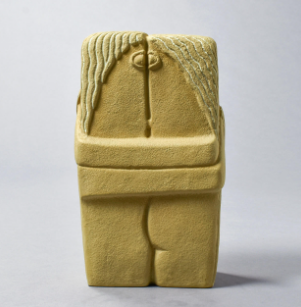
The Kiss:
D: 1916, P/S: Modernism, A: Brancusi, M/T: Limestone, F: Depicts a couple kissing, C:explores themes of love and unity and explores the anatomy of both genders.
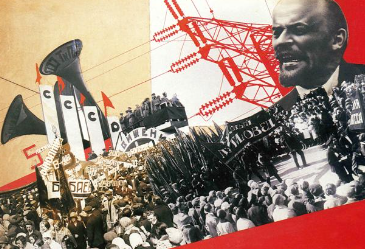
Post Five Year Plan:
D: 1932, P/S: Russian expressionism, A: Stepanova M/T: does not say on slideshow, F: Depicts the political climate of Russia around the time of Stalin. C: the chaos of this time is captured very well by the artist with vivid bold colors and many different pictures.
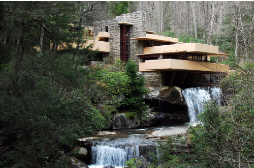
Kaufmann House:
D: 1936, P/S: Modern Architecture, A: Wright, M/T: Concrete, sandstone, steel and glass, F: the summer house for the Kaufmann, C: the family wanted to have the falls involved in their home and the architect incorporated it into the house, though indirectly
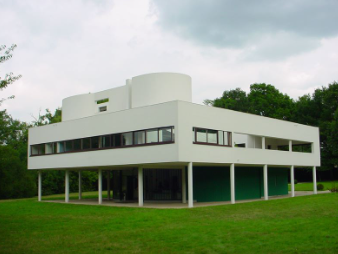
Villa Savoy:
D: 1929, P/S: Modernist Architecture, A: M/T: F: Architect believed the home should be a vessel for the people living in it; it should serve the people, C: Public v private sides to the house.

Seagram Building:
D: 1960, P/S: Modern Architecture, A: Rohe/Johnson, M/T: Steel frame with glass, F: served as an office building, C: drew a lot of inspiration from Roman and Greek styles which is seen in his excessive use of travertine and other architectural features.
Museum:
D: 1997, P/S: Post-Modernism, A: Gehry, M/T: Titanium, limestone, glass, F: a museum, C: this style centered around the idea of challenging the norms of architecture.